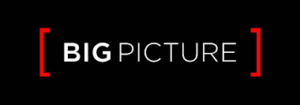1) I have appreciated the opportunity to read everyone’s posts and their interpretation of this assignment.
As a student in Knowledge Management with classmates from around the world, I found Julia’s issue of “Reproducing inequity: the role of race in the business school faculty search”, to be of statistical interest. The article proceeds to enlighten us that an overwhelming 67% of full-time faculty at business schools are white. The research noted that to be effective in creating an inclusive environment, everyone must be enthusiastic and open to change. Exactly! Without reading about this research, I might have assumed (and you know what happens when you do that)…that highly educated individuals might embrace diversity and all that it contributes to a school’s educational value. As the students so eloquently discussed in the YouTube video, in the business world they will encounter diversity as well as different mindsets. By having a diverse faculty as instructors their education would reflect the world in which they’ll be working. I also found the graphic with data from the opinions of white and black faculty to be quite eye opening. White faculty members consider their department to be more committed to inclusion while black faculty may believe that department efforts to promote inclusion are unsatisfactory. As a result, many feel as though the department does not take inclusion seriously.
So Julia your article got me thinking…I found this in the Daily Orange from March 2021
In early March, the Board of Trustees special committee announced a $50 million investment toward faculty diversification. The university has also increased the number of learning communities geared toward underrepresented communities and hired additional counseling professionals from marginalized identities.
Students question SU’s commitment to diversity, report shows
I guess we’ll see Syracuse University!
Another contribution that I enjoyed reading was Kayla’s contribution on “The association between unemployment status and physical health among veterans and civilians in the United States” by Than V. Tran, Julie Canfield, & Keith Chan. I appreciated increasing public awareness of the struggles of marginalized people face. In my classes at Syracuse, so many of my classmates are military or former military. In addition to unemployment health concerns for veterans the TED talk pointed out that two thirds of veterans struggle to adjusting to civilian life. This has definitely opened my eyes to the great challenges of veterans and I’m glad that Syracuse University has the National Veterans Resource Center that can assist our military in their educational endeavors.
In our Expanding the Canon posts, classmates offered many different aspects of diversity and organizational culture. I enjoyed exploring these differences in a safe and positive environment. This unit has been about understanding each other and moving from an environment of tolerance to celebrating the diversity within each individual.
3) Transitions allow you to signal clearly when you are changing direction. This change could be in the subject or emphasis. One thing that should be noted Bogost could never be accused of using too many strong transitions. There was not a however or nevertheless to be found…his transitions were very slick and seamless. I kept re-reading the article to find transitions, they were not overly obvious and strong.
I’m about to demonstrate my quantitative nature right now which might not score me points with a qualitative writing teacher but … but is utilized as a transition word to begin paragraphs four times as well as in countless sentences. I just found that interesting.
As far as transitions, I noted the first one at the first but… “But that’s an aspirational hope. This is when Bogost emphasizes a viewpoint. Another transition I noted is after (yes another but) “But their impact might be a drop in the bucket”. This transition has particular emphasis by utilizing that strong phrase. The writer is contrasting good efforts however realistically those efforts have a minimal impact.
Another transition is “But integration is much harder than diversity.” Since this transition is at the start of a paragraph, it signals a connection (in this case a contrast) between idea segments.
I noticed that Bogost used Webb’s name as a transition to connect paragraphs…
“When Amy Webb, Webb, who is a professor at New York University, Webb’s experience is, Webb points to China, In Webb’s view, But to Webb, For Webb”
It appears that Webb is the transition between many parts of Bogost’s writing. Bogost in his writing has the ability to connect with his audience. The situations are relatable and by using smooth transitions it is an easy read.


